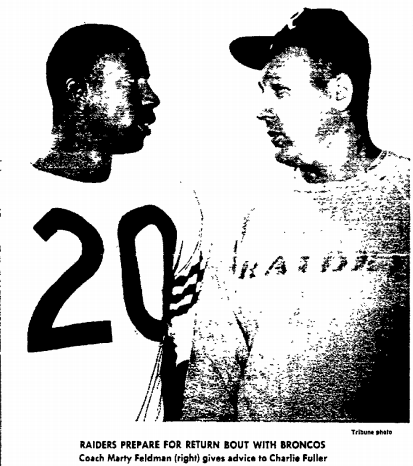We can only hope the worst is over for the Jaguars, that they’ll never again be as Horrifically Bad as they were from the second half of Week 1 through the first half of Week 3. But with a rookie quarterback, Blake Bortles, now running the offense, you can never been 100 percent sure.
To summarize the Jags’ miseries:
They lost the second half to the Eagles, 34-0.
Then they lost the game to the Redskins, 41-10.
Then they lost the first half to the Colts, 30-0.
Add it all up and you get: Other Guys 105, Jacksonville 10 — a point differential of minus-95 in the equivalent of two games.
Any idea how many NFL teams have been outscored by that many points over a two-game span? Answer: one (since 1940, at least).
Indeed, I turned up just 10 in the last 75 seasons who were minus-80 or worse over a two-week stretch. (Wish I could broaden it to eight-quarter stretches like the Jaguars’, but the search engine at pro-football-reference.com doesn’t let me to do that.)
Anyway, here are the Terrible Ten:
WORST POINT DIFFERENTIAL IN A TWO-GAME STRETCH SINCE 1940
[table width=”400px”]
Games,Team (W-L-T),PF,PA,Diff
1-2,1961 Raiders (2-12),0,99,-99
1-2,1973 Saints (5-9),10,102,-92
6-7,1966 Falcons (3-11),10,100,-90
8-9,1949 N.Y. Bulldogs (1-10-1),20,107,-87
13-14,2000 Browns (3-13),7,92,-85
7-8,1966 Falcons (3-11),20,105,-85
1-2,1989 Steelers (9-7),10,92,-82
5-6,2009 Titans (8-8),9,90,-81
1-2,1978 Colts (5-11),0,80,-80
4-5,1966 Eagles (9-5),17,97,-80
[/table]
What’s fascinating is that several of these teams bounced back after hitting bottom. The ’89 Steelers actually made the playoffs — and beat the Oilers in the first round. In fact, they nearly made it to the AFC title game, dropping a 24-23 heartbreaker to the Broncos in the semifinals. (And Denver, of course, reached the Super Bowl.)
Also, the ’66 Eagles finished 9-5, and the ’09 Titans won eight of their last 10 with Vince Young at quarterback to end up 8-8.
FYI: The ’66 Falcons were a first-year expansion team, so they can almost be excused. Still, that was a wicked three weeks they had, getting blown out 44-7 by the 49ers, 56-3 by Vince Lombardi’s Packers and 49-17 by the Browns.
Finally, a word about the ’61 Raiders: After beginning the season with back-to-back humiliations of 55-0 (Oilers) and 44-0 (Chargers), they fired coach Eddie Erdelatz and promoted offensive assistant Marty Feldman, “whose only prior head coaching was for Valley Junior College and the Stanford Frosh,” the Oakland Tribune reported.
I know what you’re thinking. But, no, it’s not this Marty Feldman, the guy who played Igor in Young Frankenstein:
It’s this Marty Feldman:
Two years later, Al Davis arrived on the scene, and Pride and Poise quickly replaced 55-0 and 44-0. If only the Jaguars could find an Al Davis of their own.
Source: pro-football-reference.com

